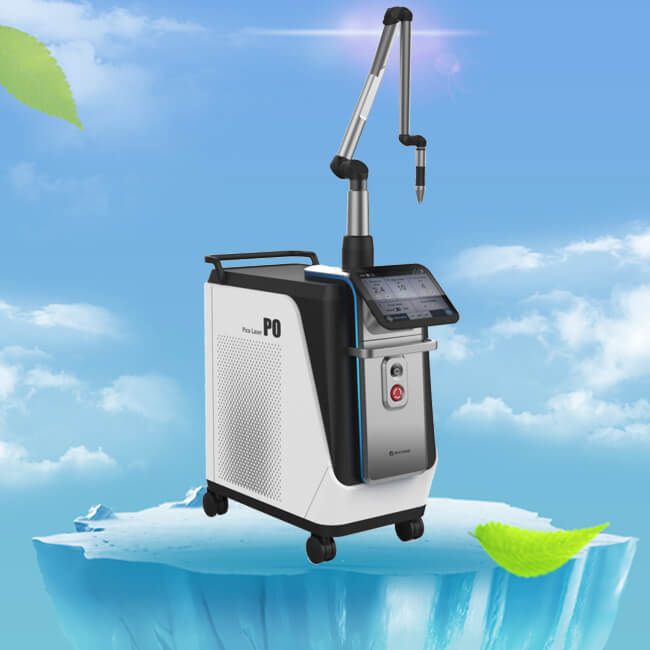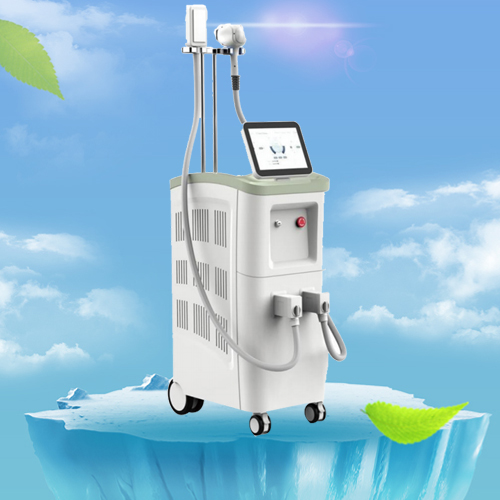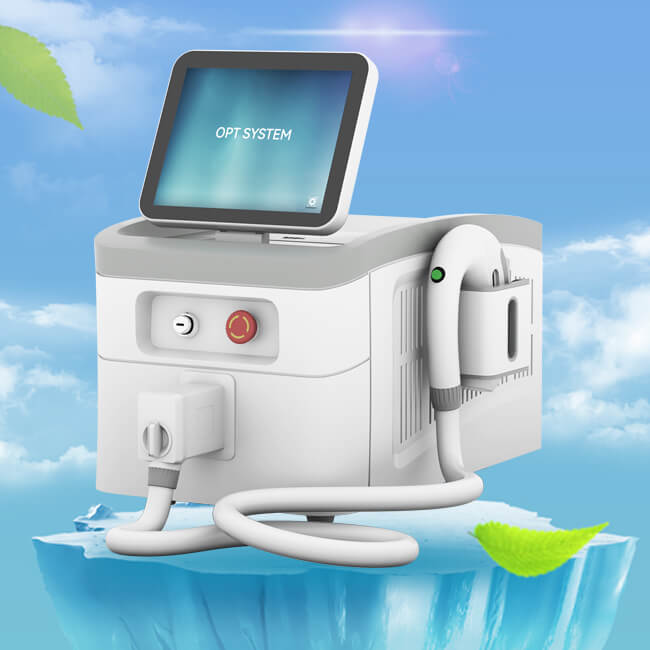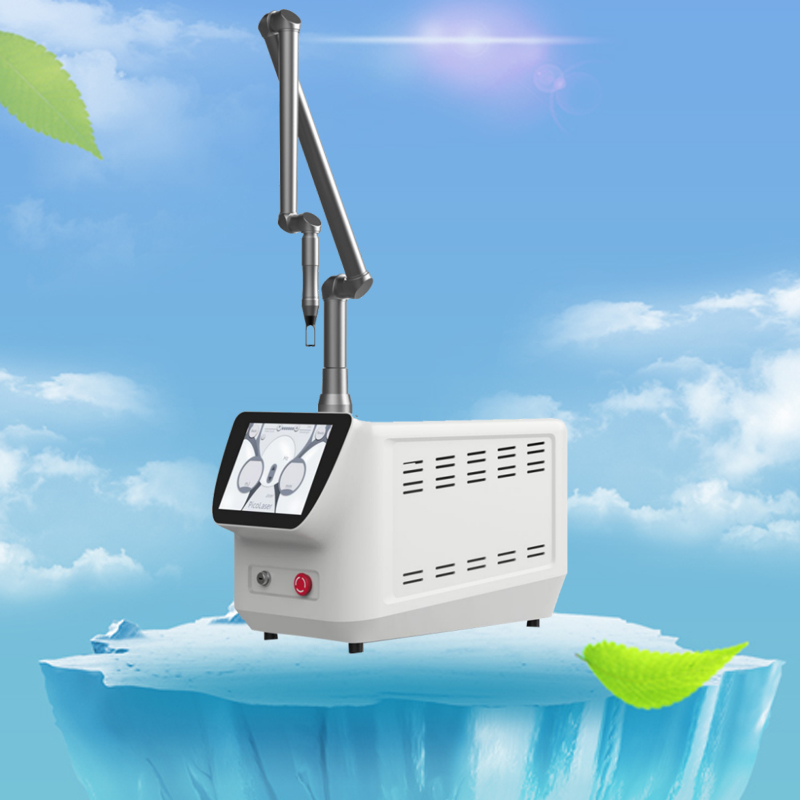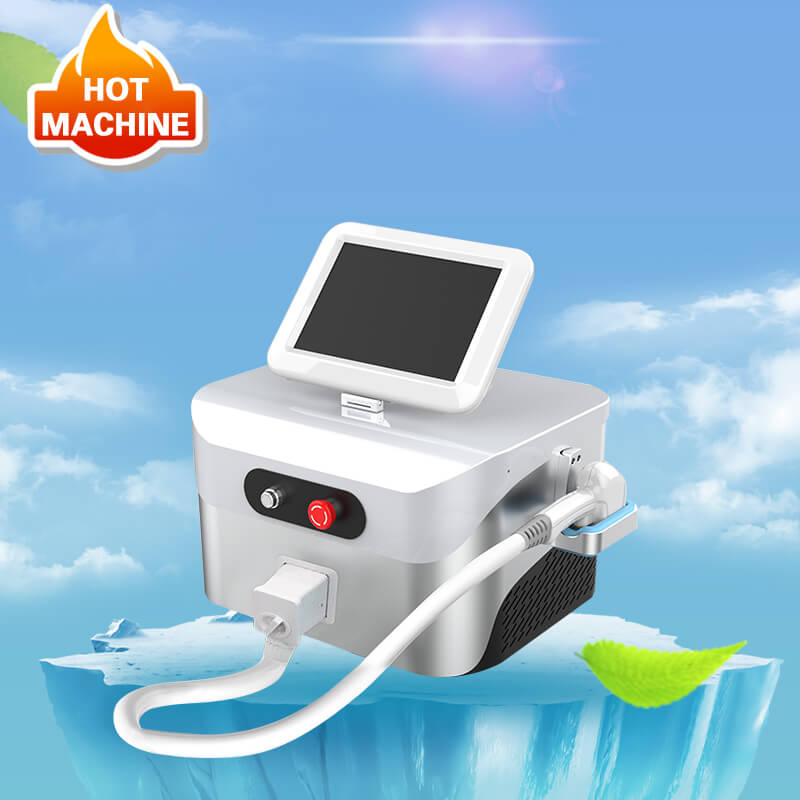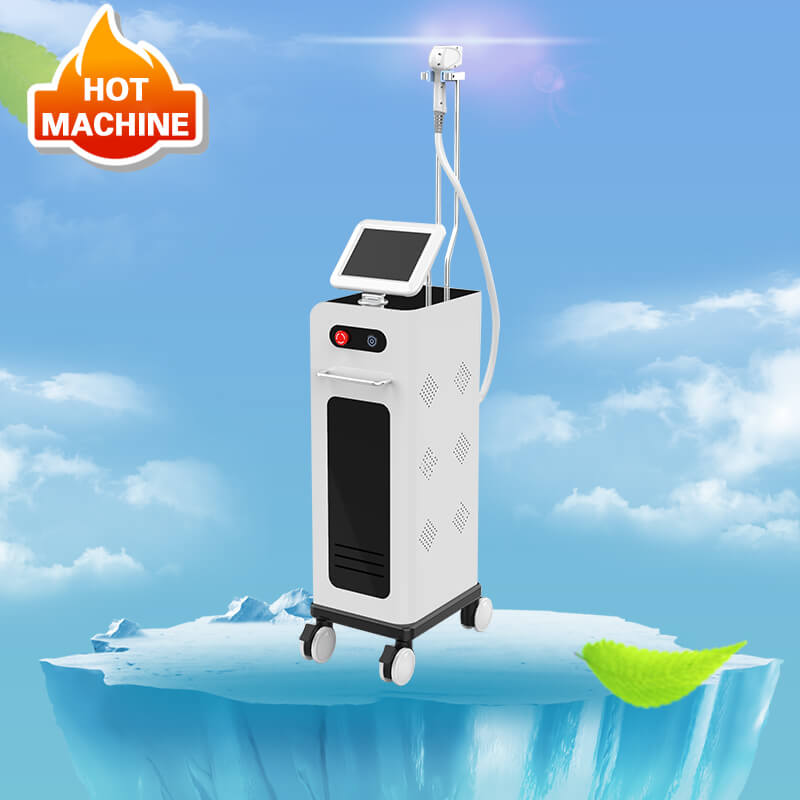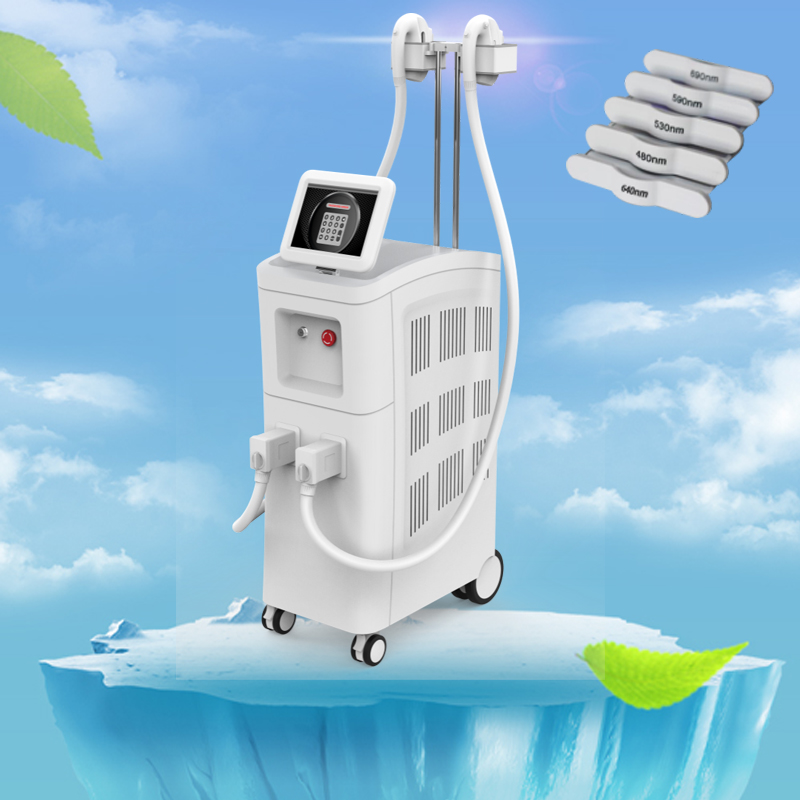Fractional Erbium Laser Vs CO2 Laser – What is the Difference?
Author:baishilf Time:2024-10-25 13:54:26
With each passing year, as age begins to catch up, it is perfectly normal to begin taking an interest in skin rejuvenation and skin resurfacing treatment options. Laser resurfacing technologies represent an exciting development to improve tone, texture and pigmentation of the skin. Of these, CO2 fractional laser machine and erbium laser machine are both commonly used for skin rejuvenation and resurfacing. Although both of these ablative laser-based treatments are effective in resolving issues pertaining to skin textures, they differ from each other in some aspects including treatment mechanism, depth of treatment, and properties. In this article, we will discuss the differences between the fractional Erbium laser resurfacing and the CO2 laser as well as its effectiveness on different skin conditions. Read on to find out why we don’t use CO2 lasers for the treatment of acne scars!
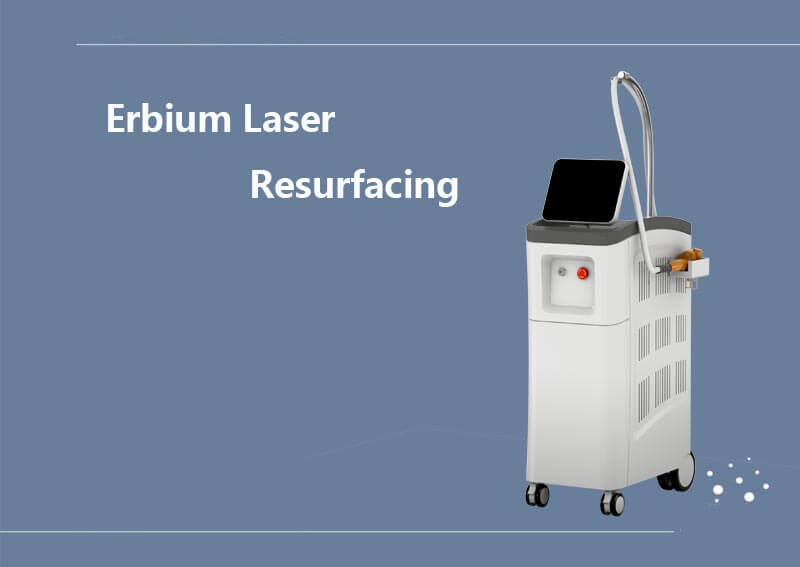
Ablative Laser Resurfacing
Although Erbium laser and Fractional CO2 lasers are both classified as ablative lasers, they have different properties. But before we dive into their differences, let’s first understand what ablative lasers are. Ablative laser skin resurfacing involves the selective thermolysis of the epidermal and superficial dermal layers of the skin by targeting them with light energy, leading to an improvement in skin quality and tone. During the procedure, water in the skin cells absorb light energy from the laser emitting thermal energy, which destroys the surrounding tissue.
Ablative lasers vaporize tissue and therefore are more aggressive compared with the gentler non-ablative lasers that leave the skin intact. Although ablative lasers result in far more downtime and a lengthier recovery process, they remain the lasers that produce the most dramatic skin resurfacing outcomes. Non-ablative lasers are free of the side effects of ablative lasers and leaves the epidermis intact while producing rejuvenating skin effects. By comparison, the treatments are gentle and requite less downtime, but produce a more moderate response.
Although Erbium laser and Fractional CO2 lasers are both classified as ablative lasers, they have different properties. But before we dive into their differences, let’s first understand what ablative lasers are.
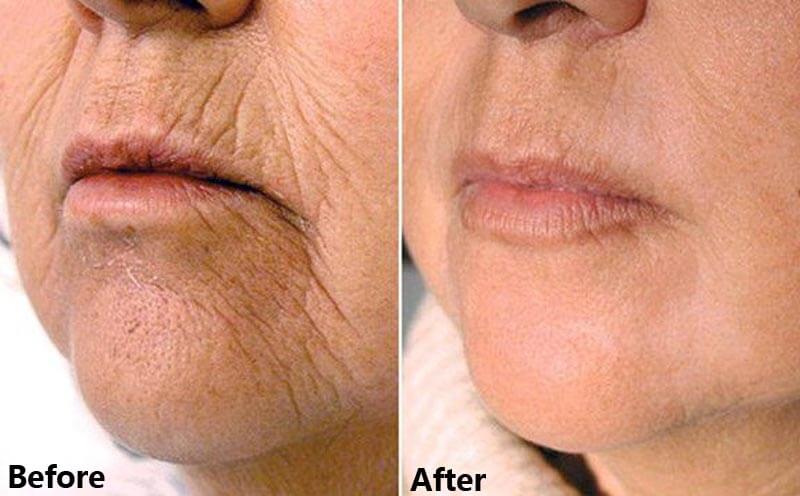
Fractional Erbium Laser and CO2 Laser: What’s the Difference?
CO2 lasers was once a major advancement in the area of facial skin resurfacing and has been used with great success for the treatment of wrinkles, photoaging, scarring as well as pigmentation. However, problems with prolonged healing, prolonged redness, risks of hyperpigmentation and hypopigmentation has led to the development of the Erbium Laser. Additionally, the higher incidence of post inflammatory hyperpigmentation following a CO2 laser treatment in darker skin types is a major disadvantage of the CO2 laser over the Erbium Laser. When laser energy interacts with tissue, there are four possible outcomes: *absorption. *scatter. *reflection. *transmission. The amount of each depends to a large part on the wavelength of the laser energy and chromophore of the tissue.
CO2 laser: CO2 laser has a wavelength of 10,600 nm and is very well absorbed by water. Despite the longer wavelength that allows deeper penetration, the light energy absorbed is converted into heat energy, which rapidly heats the tissue. This heat has several effects that causes thermal damage in adjacent and deeper tissues, and this thermal damage is thought to account for the delayed healing, prolonged redness and pigmentation problems associated to CO2 lasers. Collagen, a large component of the dermis does not absorb CO2 laser very well. This then leads to more heat build-up and adjacent thermal damage, which in turn, acts as a barrier to further penetration of the laser with subsequent passes. This has been termed the “stacking effect”. However, the CO2 laser also causes contraction in the collagen, which is thought to account for further remodeling and increased collagen production. These effects results in skin tightening. One other advantage of the CO2 laser is the ability to coagulate the blood vessels when removing deep dermal lesions, like moles, leading to less bleeding.
In contrast, the Erbium laser operates at a wavelength of 1550 nm, which is significantly more absorbed by water and human skin compared to the CO2 laser. This specific wavelength was developed with this principle in mind. The enhanced absorption results in reduced heat dispersion, leading to less thermal damage to surrounding tissues. This allows for quicker recovery times, reduced redness, and significantly lower risks of hyperpigmentation and hypopigmentation. The Erbium laser also effectively targets collagen compared to the CO2 laser. However, the disadvantages of the minimal thermal damage of the Erbium laser is that it does not penetrate as deeply into the tissues as the CO2 laser. It may take three or more passes to fully ablate the epidermis. That said, it does have the benefit of allowing gentler, more specific removal of superficial pigments, but it does make the removal of pigmentation in deeper tissues more time consuming. Although wound contraction secondary to tissue healing may result in nearly the same tissue tightening as heat-induced collagen contraction, the two processes are very different and variable, with increased risk of scarring seen with wound contracture, compared with heat-induced collagen tightening.
Erbium versus CO2 Laser: Which is more effective?
#1 Treatments on Wrinkles/Fine lines.
Studies have shown that CO2 lasers cause immediate contraction of the ablated areas by denaturing existing old collagen. This procedure stimulates new collagen production, with collagen content continuing to increase long after the treatment. Consequently, CO2 lasers are particularly effective at reducing fine wrinkles. That said, similar results can be achieved with the Erbium laser by passing it multiple times over the treatment area. It also provides a more controlled ablation of the skin with even less damage to the surrounding tissue.
#2 Treatments on Acne Scars
In the treatment of acne scars, however, the effects of fractional CO2 cannot be reproduced with Erbium lasers due to its deeper penetration. Studies have shown that CO2 lasers produced more significant results in textural issues like acne scars in comparison to Erbium laser. However, it is also reported that despite CO2 lasers has good results, the Erbium laser is well-tolerated with less downtime in acne scar patients. Apart from the risks of hyperpigmentation and hypopigmentation, post-procedure discomfort was slightly more pronounced after the Erbium laser treatment in the first few days, but later on there were more complaints following the CO2 laser treatment.
#3 Laser resurfacing for skin rejuvenation
Erbium laser can be used with great accuracy to control the thermal damage inflicted during the procedure. Therefore, it is possible to tailor the treatment protocols based on individual patient conditions. This ability to control thermal damage also allows the practitioner to use more superficial treatments with almost no downtime, and much less risk of PIH. Depending on the style and speed of the treatment, Erbium laser treatments can be fine-tuned to increase or decrease the heat delivered to the skin, minimizing thermal tissue effects.
What are the Side Effects of Erbium laser and CO2 laser?
CO2 Laser Side Effects:
Some of these include:
*Post inflammatory Hyperpigmentation (PIH).
*Infection.
*Delay in wound healing.
*Scarring.
*Skin peeling.
*Skin redness.
*Milia – small, yellow or white cysts that appear in clusters.
*Hypopigmentation.
With this in mind, people should always discuss any potential side effects with the healthcare professional providing the treatment. The skin typically requires 2 to 4 weeks to completely heal from CO2 laser treatment. New skin begins to grow after around 2 weeks following laser treatment. The skin will initially be quite raw and may have drainage immediately after laser treatment. It may also look and feel as if it is severely sunburned.
Erbium Laser Side Effects:
Some of these include:
*Mild erythema .
*Burning sensation.
*Itching.
*Post inflammatory Hyperpigmentation (PIH).
Other potential complications include the appearance of acne, milia, and dermatitis in the treated area. Erbium lasers necessitate a shorter recovery period due to the shallower wounds they create. Additionally, Erbium lasers cause less thermal damage to the surrounding skin tissue, facilitating quicker healing. In contrast, CO2 lasers often produce deeper injuries and more extensive thermal damage, leading to longer recovery times. This makes Erbium lasers a preferable option for patients seeking faster healing with minimal thermal impact on the skin.
Although Erbium lasers do not penetrate as deeply as CO2 lasers, they’re able to mimic the effects of CO2 lasers by multiple passes, stacking and increasing the pulse duration while limiting the risk of unwanted side effects. The flexibility of an Erbium laser’s pulse formats and energy capabilities make it a desirable and safer alternative to the older CO2 laser for ablative and fractional treatments.
Why we don’t use CO2 lasers for acne scars or skin rejuvenation
Compared to Caucasians, Asian skin tend to be more vulnerable to post-inflammatory hyperpigmentation. As mentioned above, studies have also observed that CO2 laser treatment patients are exposed to a significantly higher risk of hyperpigmentation and hypopigmentation. Hyperpigmentation and hypopigmentation are primarily a fallout of thermal damage. Since Asian skin has a higher tendency to capture heat, the occurrence of PIH is more common in dark skin types corresponding to Type III and above on the Fitzpatrick scale.
If used on Asian skin, complications of hyperpigmentation and burns more often occur, resulting in multiple additional treatments to rectify the damage. With deep scars, the results are often unsatisfactory due to more complications and longer downtime for patients.
Instead of using the CO2 laser, specialists prefer to use Erbium lasers as well as the ablative radiofrequency technology which are more suitable for Asian skin. The newer Erbium laser can reach the necessary ablative depth to treat deep scar tissue that is pulling the skin down. Dermal lasers are also used to stimulate the collagen production. This triple-action of deep fractional skin resurfacing, which releases the tethering scar fibers and rebuilds the skin’s collagen matrix, means the skin is restored to its natural position, resulting in much even skin texture a much lower risk of the side effects associated to CO2 lasers.
Which is more suitable for me: Erbium Laser or CO2 laser?
Each laser is tailored for different skin types and concerns, so the most appropriate choice for you should be based on a professional evaluation rather than solely relying on the laser brand. Conduct thorough research and consult with an experienced physician to understand your specific skin condition and explore suitable treatment options.





